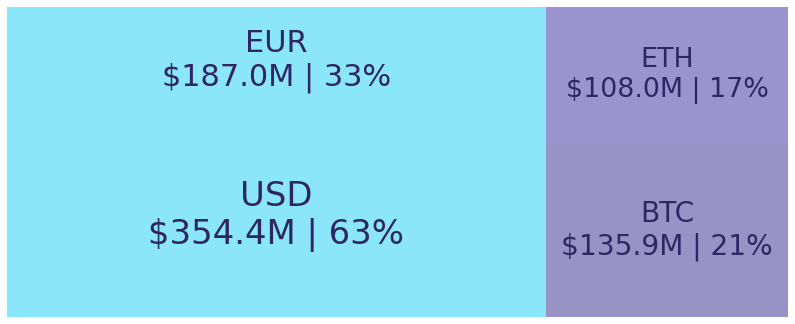 Keeping current with Health Canada’s medical device regulatory developments
Keeping current with Health Canada’s medical device regulatory developments
Over the course of the last year and a half, the number of accomplishments that Health Canada has achieved both in urgent response to the COVID-19 pandemic and towards priority projects is impressive.
It has been said that timing is everything. While the operational pressures from COVID-19 affected proposed timelines and milestones for regulatory framework innovation, the pandemic also provided an opportunity to test temporary agile regulatory measures.
These measures provided an important proof of concept for ideas that were already under consideration and reinforced the need for regulatory agility to support timely access to needed health products. The lessons learned from the regulatory response to the pandemic will therefore form an integral part of Health Canada’s future regulatory innovation efforts.
Health Canada recently published two reports on their accomplishments respecting medical devices in 2020 and the first half of 2021. The Drug and Medical Device Highlights 2020 report, published in July 2021, describes their accomplishments both in response to the COVID-19 pandemic and towards their mandate to provide timely access to safe and effective medical devices. The Medical Devices Action Plan: Progress Report, published in May 2021, discusses how Health Canada has continued to incorporate the Medical Devices Action Plan principles into their work and how they plan to build on those principles.
Medical Device Highlights from 2020
In January 2020, Health Canada launched the Medical Devices Directorate (MDD). In recognition of the importance of regulating medical devices based on a lifecycle approach, this was the first time that Health Canada combined pre-market and post-market work within the same directorate. The MDD covers the pre-marketing functions previously carried out by the Therapeutics Products Directorate and post-marketing functions previously carried out by the Marketed Health Products Directorate.
To no one’s surprise, the COVID-19 pandemic defined much of the MDD’s work during 2020 as they collaborated with other regulators and international organizations to align their regulatory approach with the global response to the pandemic. The result of this was to put into place regulatory measures that were expeditious and flexible, without compromising their high standards for safety, effectiveness, and quality. To this end, Health Canada created three Interim Orders (IOs) related to medical devices to:
- Establish a temporary approval pathway to expedite the review of medical devices for the diagnosis, treatment, mitigation or prevention of COVID-19
- Allow for exceptional importation of medical devices experiencing a shortage in Canada and provide tools to help prevent and alleviate device shortages
- Facilitate a more efficient and flexible authorization process for COVID-19-related clinical trials and broaden access for trial participants (e.g. by allowing the involvement of a wider range of health professionals or investigators to carry out the trials and allowing for remote patient consent).
The IOs were signed in March and May 2020 and were set to expire in one year. After one year, all three original IOs were repealed and replaced with a second IO to extend the temporary pathways. The MDD’s intent is to leave the second IOs in place until at least the fall of 2021, at which time transition regulations would take effect. The transition regulations would remain in place for two years, during which time authorization holders have the option to transition to a regular medical device licence (Class II-IV) or a Medical Device Establishment Licence (MDEL; Class I).
In 2020, Health Canada approved 545 medical devices for use in relation to COVID-19 and 18 investigational testing applications (ITAs) for devices related to COVID-19 under the IOs. They also spearheaded the creation of a national network of 3D printing experts to inform a guidance for industry on 3D printing of personal protective equipment in response to shortages in the supply of PPE in Canada. Additionally, they quickly established regulatory requirements for reprocessing of N95 respirators.
COVID-19 aside, the MDD continued its efforts to uphold its core responsibilities to approve medical devices to ensure timely access to Canadians. In 2020, they approved 332 new medical devices in the highest risk categories (277 Class III and 55 Class IV devices) and 122 new ITAs were approved. They also authorized 2,693 requests for special access to medical devices. This is an impressive endeavor as the numbers from 2019 were 56 for Class IV devices, 144 for ITAs, and 2,829 for special access requests when there was no pandemic to take priority.
Progress on the Medical Devices Action Plan
Health Canada remained focused on activities to continue to improve the safety and effectiveness of devices and optimize health outcomes for patients as outlined in the Medical Devices Action Plan launched in 2018. The Action Plan describes a three-pronged approach to:
- Improve how devices get on the market
- Strengthen monitoring and follow-up of devices on the market
- Provide more information to Canadians.
Improve how devices get on the market: Health Canada published their “ambitious vision”, in a consultation paper, for the modernization of clinical trial processes and regulations not only for devices, but for drugs, biologics, and natural health products (i.e. a single framework for all health products). This new regulatory framework is being developed to adapt to advances in technology (e.g. 3D bio-printing and artificial intelligence applications), new types of health products (e.g. personalized health products and gene therapies) and new clinical trial types and designs. It will aim to introduce a risk-based approach, allow greater flexibility and more streamlined processes, and align with international best practices. There will be a follow-up “What We Heard Report” later this year. Health Canada also continued to seek input from scientific, medical, and patient communities and held meetings of the Scientific Advisory Committees on Medical Devices Used in the Cardiovascular System and Health Products for Women.
Strengthen monitoring and follow-up of devices on the market: Health Canada published new regulations for post-market surveillance that increase their post-market surveillance authorities. This enables them to better identify, assess, and manage new risks posed by medical devices on the market. This includes the power to compel an assessment or additional tests and studies for a marketed device, to require manufacturers to prepare summary reports and provide information about foreign risk actions. As an accompaniment, they published/updated four related guidance documents (incident reporting, foreign risk notification, summary reports and issue-related analysis of safety and effectiveness, and a guide to the new authorities). These amendments to the Medical Device Regulations (MDR) came into effect on June 23, 2021, with the exception of the requirement for summary reports which comes into effect on December 23, 2021. Health Canada also has plans this year to establish how they will use real-world evidence in regulatory decision-making.
Provide more information to Canadians: Health Canada expanded the amount of information that can be accessed by Canadians with respect to:
Moving forward, Health Canada plans to focus their attention back to activities related to regulatory innovation. With respect to medical devices, these include:
- Continuation of the work towards clinical trial modernization (as discussed above)
- Development of an Advanced Therapeutic Product Pathway for authorizing innovative products that currently don’t fit well within existing health product regulations. This “regulatory sandbox” approach will enable market access with rules and regulatory oversight that are flexible, risk-based, and appropriate for these innovative products. Health Canada is planning to consult with stakeholders later this year to inform the design and implementation of the new pathway.
- Adapting Health Canada’s medical device licencing scheme to be more agile and flexible. This will include creating tools to help with life cycle oversight (e.g. terms and conditions) and use of decisions made by trusted foreign regulators. Stakeholder engagement is planned for 2021 and 2022.
Health Canada is committed to being open and transparent and making more information available to Canadians than ever before. These two reports support that initiative by showcasing departmental operations and achievements. They serve to help Canadians understand how and why decisions are made and assist industry to comply with current regulatory requirements and plan for upcoming regulatory changes.
To keep abreast on the new initiatives mentioned above, subscribe to the Really Simple Syndication (RSS) feed to obtain links to new Medical Devices information when it is posted online. Also watch for opportunities to engage as a stakeholder and get involved in the decision-making process.
Image: 172026077 | Dreamstime.com
Tara Lysechko is a senior QA/RA specialist at StarFish Medical. Tara has 11 years of natural health product industry experience in Regulatory Affairs, including seven years consulting to start-up companies. At StarFish Medical, Tara provides quality assurance and regulatory support for the design, development and manufacture of innovative medical devices. She holds a Ph.D. in Immunology from the University of Alberta.
Source: https://starfishmedical.com/blog/health-canada-regulatory-development-update/
- 11
- 2019
- 2020
- 2021
- 3d
- 3D Printing
- access
- Action
- activities
- Additional
- advisory
- All
- Allowing
- analysis
- applications
- artificial intelligence
- authorization
- BEST
- best practices
- build
- Canada
- clinical trials
- Communities
- Companies
- consent
- consulting
- content
- continue
- COVID-19
- COVID-19 pandemic
- Creating
- Current
- Design
- Development
- Devices
- documents
- Drugs
- Effective
- equipment
- experience
- experts
- First
- first time
- fit
- Flexibility
- Focus
- form
- Forward
- Framework
- future
- Global
- Health
- High
- How
- HTTPS
- identify
- Including
- Increase
- industry
- information
- Initiative
- Innovation
- innovative
- integral
- Intelligence
- intent
- International
- Investigators
- involved
- iOS
- IT
- July
- learned
- Licence
- Making
- March
- Market
- medical
- medical device
- medical devices
- meetings
- modernization
- monitoring
- network
- numbers
- online
- open
- Operations
- opportunities
- Opportunity
- Option
- orders
- Other
- pandemic
- patients
- planning
- player
- power
- PPE
- Prevention
- Product
- Products
- professionals
- projects
- proof
- proof of concept
- Protective
- quality
- range
- regulations
- Regulators
- regulatory
- report
- Reports
- Requirements
- response
- review
- Risk
- rules
- safe
- Safety
- set
- Share
- shortages
- Simple
- standards
- Start-up
- studies
- supply
- support
- surprise
- surveillance
- system
- Technology
- temporary
- test
- Testing
- tests
- Therapeutic
- therapeutics
- time
- treatment
- trial
- university
- Update
- Video
- Watch
- within
- Women
- Work
- year
- years
- youtube


